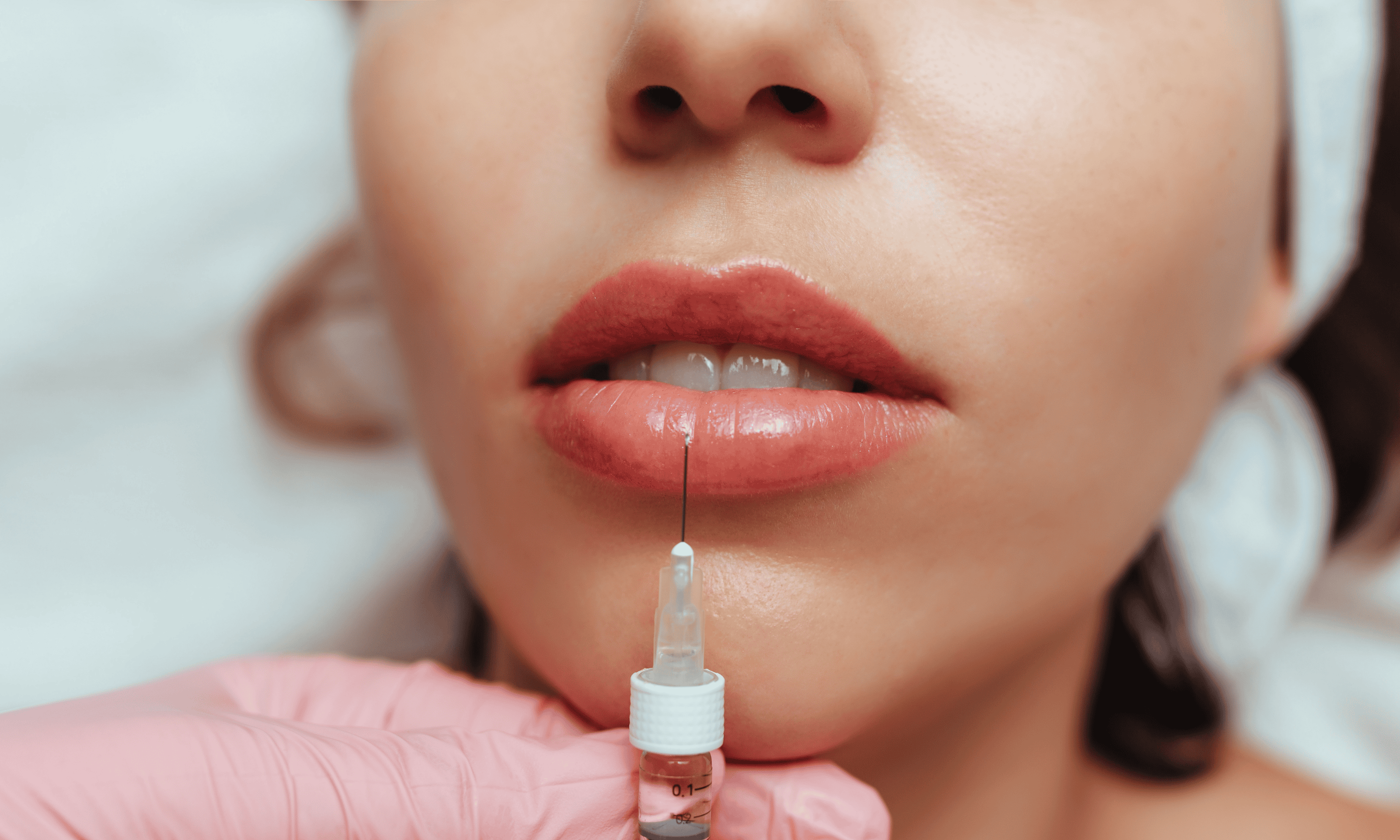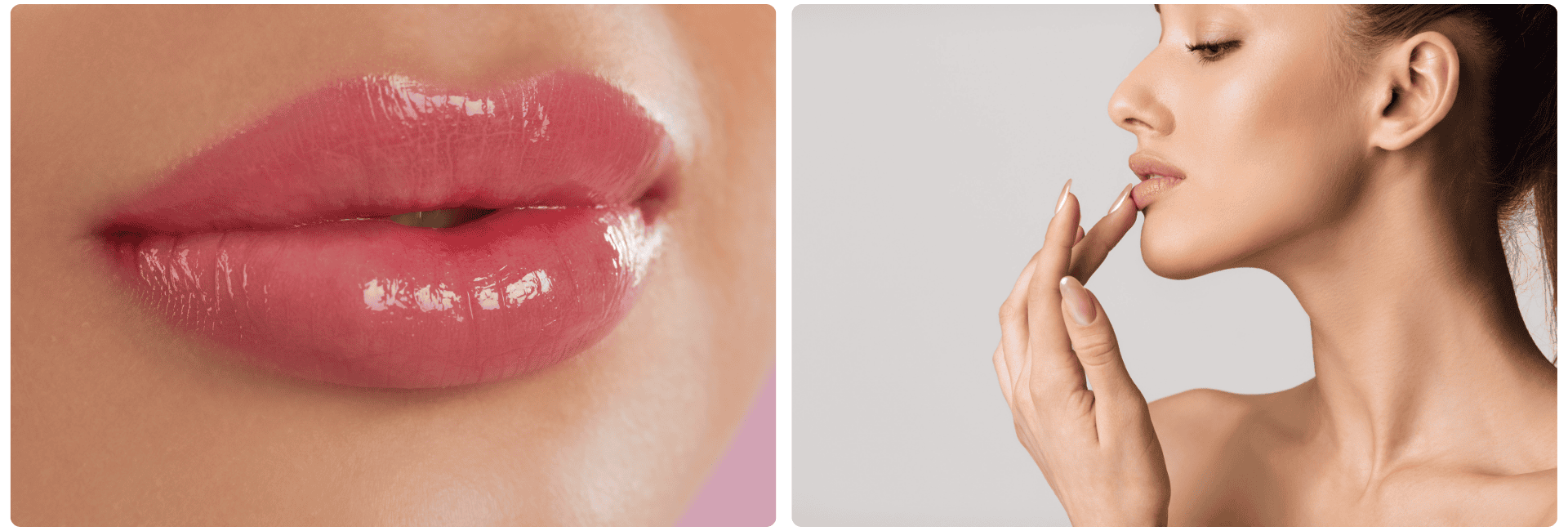
Lip fillers: Exploring the world of plump lips
Plump, luscious lips have become a sought-after feature in the beauty industry in recent years. One popular method to achieve this look is through the use of lip fillers. In this blog, we will delve into the world of lip fillers, uncovering how they work, discussing why they have become such a trend, and exploring the various types of lip fillers.
What are lip fillers?
Lip fillers, alternatively referred to as dermal fillers or lip injections, are injectable substances strategically employed to augment volume in the lips and refine their contours. Among the most frequently utilized fillers are those containing hyaluronic acid, a naturally occurring substance in the body responsible for retaining moisture and promoting a fuller appearance. The injection of hyaluronic acid fillers provides a safe and effective means of achieving lip enhancement, allowing individuals to attain natural-looking and customizable results.
How do lip fillers work?
The process of achieving fuller lips with lip fillers is straightforward and typically conducted by a qualified medical professional. During the treatment, the filler, commonly containing hyaluronic acid, is gently injected into specific areas of the lips, based on the individual's desired results. Hyaluronic acid's natural ability to attract water comes into play, creating a plumper and more hydrated appearance. This approach ensures a controlled and customizable enhancement, allowing individuals to achieve fuller lips while maintaining a natural and harmonious balance with their facial features.
Different types of lip fillers
Not all lip fillers are created equal, and a key factor in achieving naturally looking results is selecting the right type of filler. Here are some of the most common types:
- Hyaluronic Acid fillers: These are the most common for lip augmentation. They are based on a naturally occurring substance in the body and provide a temporary but effective solution for improving lip shape and adding volume.
- Collagen fillers: Although less common than hyaluronic acid, collagen fillers are still occasionally used. They work by adding collagen to the lips, aiding in creating volume.
- Poly-L-Lactic Acid (PLLA): This filler stimulates the natural production of collagen in the skin. While often used for the face, it can also be applied to provide long-lasting improvements to lip structure.
- Calcium Hydroxylapatite (CaHA): Another option is CaHA, which also stimulates collagen production and results in longer-lasting effects.
Choosing the right lip filler depends on various factors, including the intended results, the durability desired, and any personal preferences. An experienced professional can provide guidance on which type of filler is most suitable for your specific goals.
Important considerations
When considering lip fillers, it is crucial to maintain realistic expectations and be well-informed about the various types of fillers available. Scheduling a consultation with a qualified medical professional becomes essential, as it not only aids in determining the most suitable filler for your goals but also provides a comprehensive understanding of potential risks and side effects associated with the procedure.
Through this informed decision-making process and collaboration with an experienced professional, individuals can enjoy the benefits of lip fillers while achieving the desired improvements to their lips. This personalized and knowledgeable approach ensures that the outcomes align with the individual's aesthetic preferences and contributes to a positive and satisfying experience with lip enhancement procedures.
Filler (1 mL) costs around the world
The cost of dermal fillers can vary significantly depending on the country and region where the procedure is performed. Below is a comparison of prices in 20 different countries, converted into US dollars (USD) for clarity:
- United States: $500 - $1,500 USD per mL
- United Kingdom: £300 - £700 GBP per mL (approx. $400 - $930 USD)
- Canada: $500 - $1,200 CAD per mL (approx. $390 - $940 USD)
- Australia: $600 - $1,500 AUD per mL (approx. $440 - $1,100 USD)
- Germany: €300 - €800 EUR per mL (approx. $340 - $890 USD)
- France: €300 - €700 EUR per mL (approx. $340 - $780 USD)
- Brazil: R$800 - R$2,000 BRL per mL (approx. $150 - $380 USD)
- Mexico: $2,000 - $5,000 MXN per mL (approx. $100 - $250 USD)
- Japan: ¥30,000 - ¥80,000 JPY per mL (approx. $270 - $730 USD)
- South Korea: ₩300,000 - ₩1,000,000 KRW per mL (approx. $260 - $860 USD)
- India: ₹15,000 - ₹50,000 INR per mL (approx. $200 - $670 USD)
- South Africa: R2,000 - R8,000 ZAR per mL (approx. $130 - $520 USD)
- UAE (Dubai): 700 - 3,000 AED per mL (approx. $190 - $820 USD)
- Saudi Arabia: 700 - 3,000 SAR per mL (approx. $190 - $800 USD)
- Russia: 5,000 - 20,000 RUB per mL (approx. $70 - $270 USD)
- China: ¥800 - ¥2,000 CNY per mL (approx. $120 - $310 USD)
- Spain: €300 - €800 EUR per mL (approx. $340 - $890 USD)
- Italy: €300 - €700 EUR per mL (approx. $340 - $780 USD)
- Netherlands: €300 - €800 EUR per mL (approx. $340 - $890 USD)
- Switzerland: CHF 500 - CHF 1,500 per mL (approx. $540 - $1,630 USD)
These prices are approximate and can vary based on factors such as the type of filler used, the specific brand, the injector's expertise, and the clinic's location within each country. It's important to consult with qualified professionals and thoroughly research before undergoing a dermal filler procedure.
Questions patients can ask when considering fillers
Fillers are popular cosmetic treatments used to add volume, reduce wrinkles, and enhance contours, often utilizing injectable gel substances like hyaluronic acid. For those considering this treatment, it's important to ask the following questions during the consultation:
- What types of fillers do you offer?
What types of fillers do you offer, and what are the differences between these products? Which type of filler would be most suitable for my specific needs and skin type? - What are the potential risks and side effects of fillers?
What are the potential risks and side effects during and after the filler treatment? How are these risks managed, and what measures are taken to prevent complications? - What results can I expect from the filler treatment?
What kind of results can I realistically expect from the filler treatment? How long will it take to see the final results, and how long will the results last? - Can I see examples of results in other patients?
Can you show me before and after photos of patients who are similar to my situation and treatment goals? This will help me better understand what is achievable with fillers. - What is the total cost of the filler treatment, and what is included?
What are the estimated costs of the filler treatment, including the product itself, the injection session, and any follow-up appointments? Are there any additional costs that I should consider? - What is your experience and training in administering fillers?
How many filler treatments have you performed, and what is your specialization in this area? Are you certified by an accredited medical organization?

Asking these questions during the consultation will provide you with detailed information about the filler treatment and help you make an informed decision about whether this option is suitable for achieving your cosmetic goals. Each individual is unique, so discussing your specific concerns and expectations with an experienced cosmetic practitioner is essential for a successful treatment outcome.

